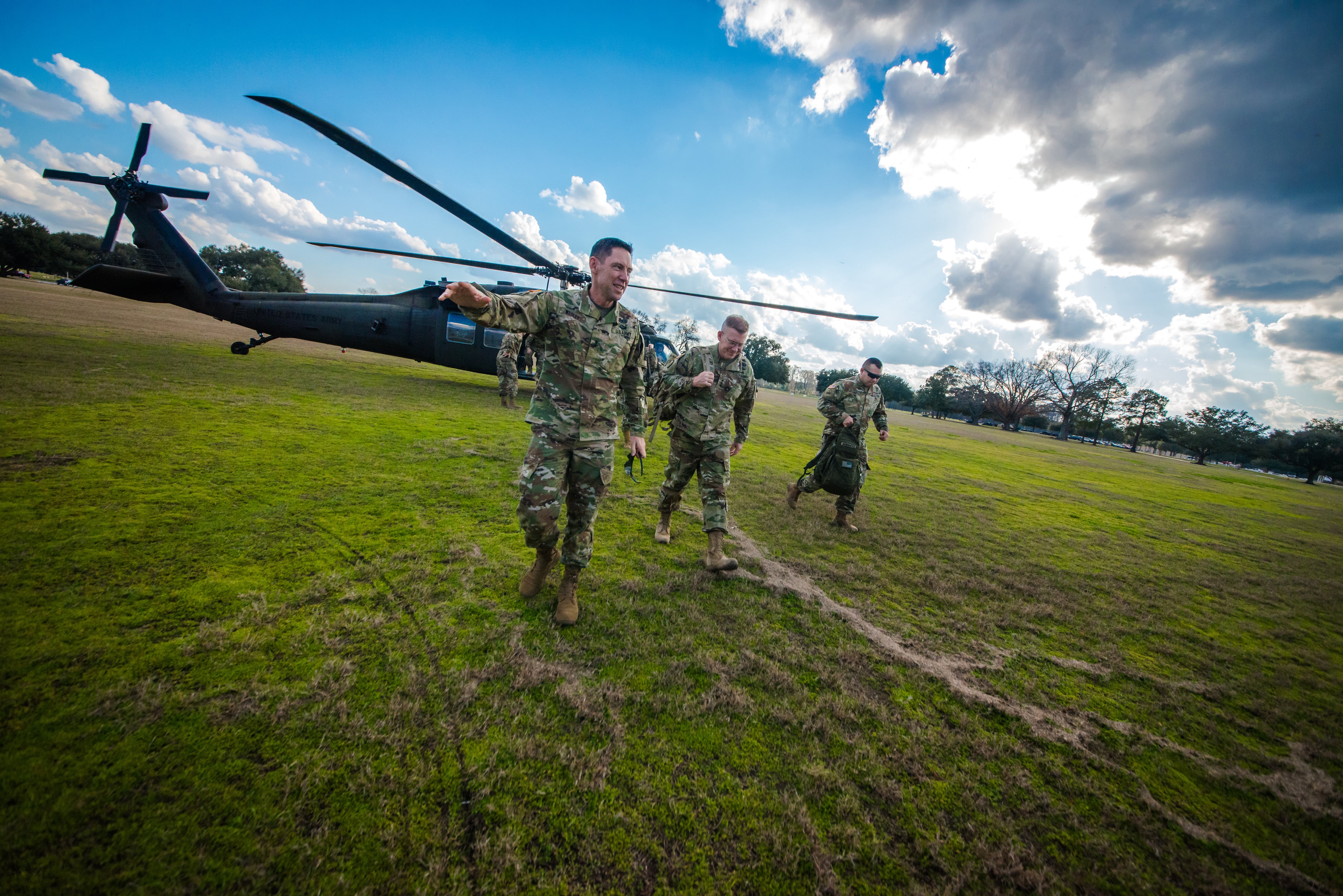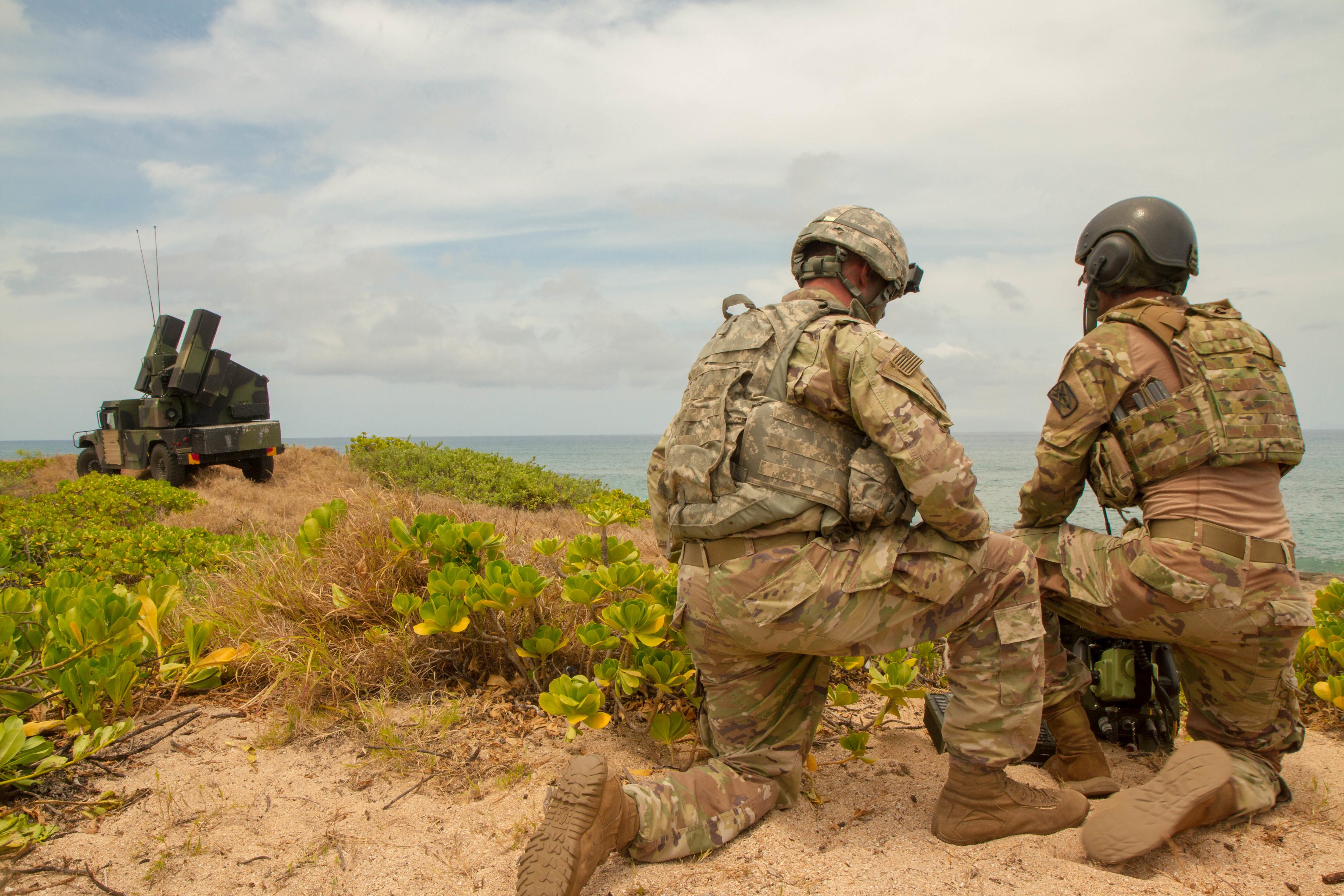The Army has plans to create at least two more multi-domain task forces, one for Europe and second task force for the Pacific region. But that’s only the beginning of what some leaders see as the future of Army operations.
Last year the Army’s first MDTF conducted network, communications and precision fires experiments during the bi-annual Rim of the Pacific Exercise, the world’s largest maritime military exercise.
That first-ever field exercise for the task force helped the Army put its newest concept, MDO, into action.
And the result was an array of precision strikes on land and at sea, which was coordinated through a network of nodes across all four services and allied nations. The first modern sinking exercise led by the Army used a combination of long-range artillery, air attacks and shore-based missiles to sink the decommissioned USS Racine.
That event developed from a year’s worth of tabletop war games and exercises. The Indo-Pacific-focused task force used 500 personnel together to exploit “enemy” weaknesses to create a “bubble” of time to strike.
During the August 2018 exercise, Col. Christopher Wendland, commander of the 17th Field Artillery Brigade, told Army Times that the work was helping soldiers regain the figurative “high ground” that has eroded by advances in near-peer competitors such as China and Russia in the past decades.
Lt. Gen. Eric Wesley, deputy commanding general of the futures concepts center at Army Futures Command, talked recently with defense media about work being done to develop more task forces and what that will mean for the larger Army as it modernizes to 2028 and beyond.
Wesley said that the first MDTF was initiated as a pilot program to help Army leaders “understand how to integrate all domains in decisive space in order to penetrate our adversaries’ (anti-access, area denial) windows.”
But, he was clear that the task force is not the end state.
“The MDTF is a means for us to learn and therefore inform MDO,” Wesley said.

To that end, they’re using the “total Army analysis” process to get space, funding and manpower to create a second and likely a third task force.
The next one up will be focused on Europe, under the command of Lt. Gen. Christopher Cavoli, commander of U.S. Army Europe, Wesley said.
Wesley did not have specific timelines for when either task force would be up and running. But given that the first task force has been going nearly three years now and took a year of planning before its first real-world exercise, they may be coming soon.
That’s because much of the Army work on MDO and the hardware it will take to make these concepts a reality is focused on delivering much of the items to the formations by or before 2028.
Bridge to future operations
But the task forces are more than just teams experimenting with new concepts and gear.
“We imagine in the future that the MDTFs in order to scale will transcend the theater and cross echelons,” Wesley said.
So the task forces will act as a sort of bridge to the future operating concepts.
“When we say MDO in 2028, ultimately you won’t have individual MDTFs,” Wesley said. “You’ll have these capabilities at echelon throughout the entire theater.”
That means that even company commanders will need to be thinking in all domains and working in a nimble way with data, cloud computing and a combination of sensors, nodes, networks and firing platforms across all of the services and partner nations, he said.
This is somewhat of a break from the last transformational shift the Army underwent in the 1980s when it adopted the Air Land Battle concept.
The Army didn’t have task forces for Air Land Battle at the time, Wesley said.
But that was because the concept was at the operational level and primarily a bi-service commitment with the Air Force and Army coordinating in two domains.
“The MDTFs are unique in that we had to understand with greater clarity how you would integrate these very distinct domains — space, cyber, air, ground, maritime — and do it in a very rapid order,” Wesley said.
Those weren’t the same demands that Air Land Battle faced when it was introduced.
How MDO works
Once place where soldiers are likely to see early iterations of how the MDO concept works beyond their headquarters, across services and partners, is in the Pacific Pathways program.
That program, which involves rotating Army units to the Pacific theater to work with partner nations under the guidance of Pacific-based Army units, has been around since 2014 but in a much smaller capacity.
Last year Gen. Robert Brown, commander of U.S. Army Pacific, announced new rotations with more troops playing different roles.
Past rotations have been smaller than brigades, sometimes battalion-sized or smaller. And they spread out to a bunch of countries in even smaller elements, staying on ground perhaps a few weeks.
The new wave will include brigade combat team-sized and larger formations that will stay in partner nations for months at a time.
That, leaders hope, will help grow partner capabilities to work in combined operations, mostly to deter a rising Chinese military that has been spreading bases and assets across the region.
Todd South has written about crime, courts, government and the military for multiple publications since 2004 and was named a 2014 Pulitzer finalist for a co-written project on witness intimidation. Todd is a Marine veteran of the Iraq War.




